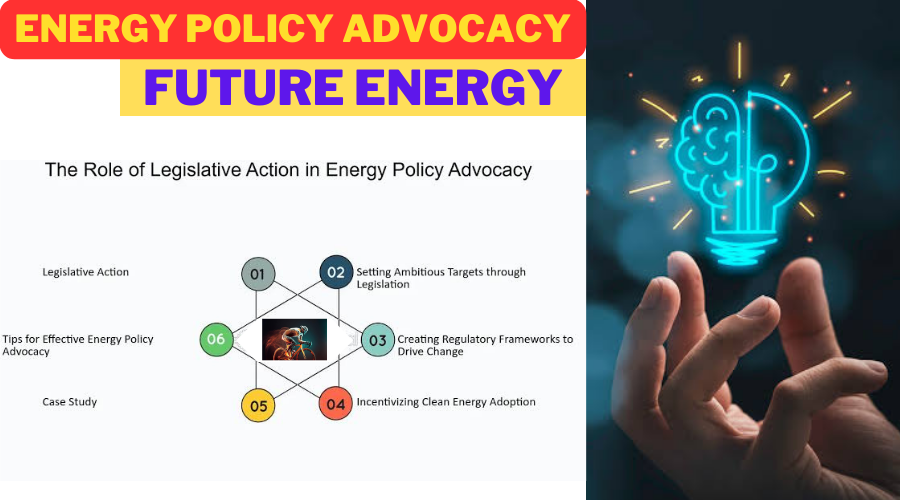In latest global, electricity performs a pivotal position in every component of our lives, from powering our homes to driving monetary growth. However, the manner we produce and consume power has huge implications for the environment, economy, and society at large. This is where energy coverage advocacy becomes critical.
Understanding Energy coverage advocacy
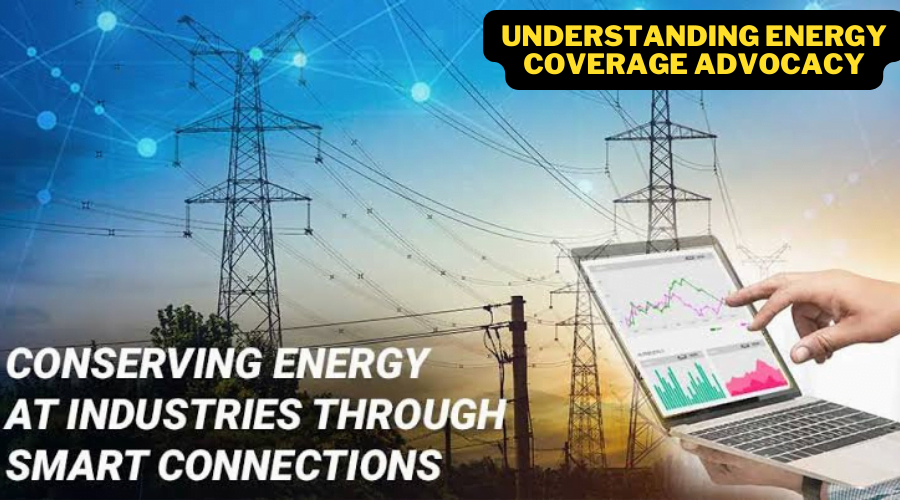

Energy coverage refers to a fixed of concepts and rules that govern the production, distribution, and consumption of power sources. It encompasses a huge variety of problems, along with strength safety, environmental sustainability, and affordability.
Energy policy advocacy involves the promotion and assist of unique regulations, guidelines, or projects associated with the production, distribution, and consumption of electricity sources. Advocates typically goal to persuade selection-makers, inclusive of government officers, legislators, and industry leaders, to undertake policies that align with their dreams and values regarding strength improvement, sustainability, affordability, and security.
Here are key elements involved in expertise energy policy advocacy:
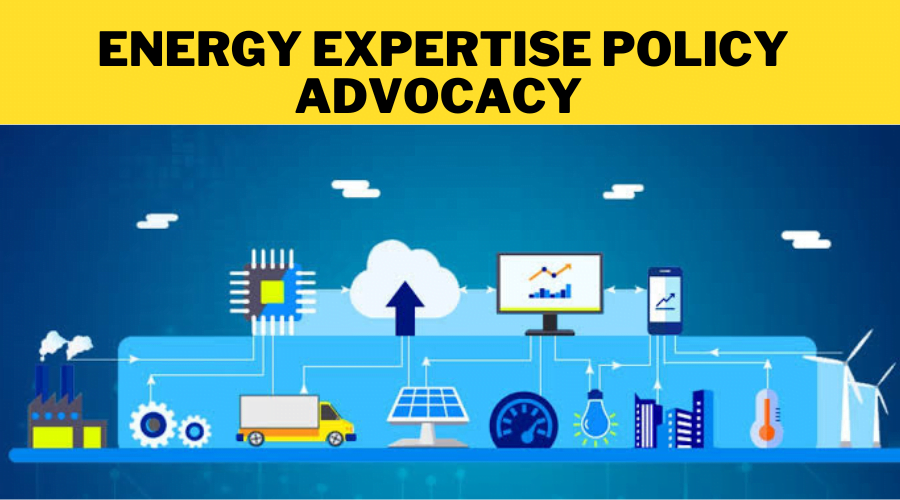

- Identifying Issues: Advocates first perceive strength-related issues or demanding situations they seek to address. These may want to consist of climate trade mitigation, strength get entry to, strength affordability, renewable strength deployment, strength safety, or decreasing environmental affects.
- Setting Goals: Advocates establish particular desires or targets they want to acquire via policy advocacy. For instance, a set may also goal to boom authorities funding in renewable power research and development or sell rules that reduce greenhouse gasoline emissions from the power area.
- Research and Analysis: Advocates accumulate facts and behavior studies to assist their positions and arguments. This may additionally involve reading the monetary, environmental, and social impacts of different electricity guidelines, as well as identifying exceptional practices and successful case studies from different jurisdictions.
- Building Coalitions: Advocacy efforts are often more effective while more than one stakeholders unite at the back of a not unusual motive. Advocates collaborate with other groups, corporations, community companies, and people who share their objectives to enlarge their collective voice and have an effect on.
- Engagement and Outreach: Advocates interact with policymakers, government businesses, industry representatives, and the public via numerous channels, such as meetings, hearings, conferences, media campaigns, and grassroots organizing. They present their studies findings, propose for particular policy proposals, and seek to elevate consciousness and mobilize support for his or her cause.
- Policy Development: Advocates can also at once take part inside the development of electricity guidelines by using offering enter for the duration of the legislative or regulatory process. This can contain submitting written feedback, collaborating in public consultations, or testifying earlier than legislative committees.
- Monitoring and Evaluation: Advocates display the implementation and impact of strength policies over the years to evaluate their effectiveness and discover areas for improvement. They may additionally propose for modifications or revisions to current policies based on new proof or changing instances.
- Adaptation and Resilience: Energy policy advocacy is often a dynamic and evolving procedure encouraged through converting political, economic, technological, and environmental elements. Advocates ought to continue to be adaptable and resilient in responding to rising challenges and opportunities.
Overall, energy policy advocacy plays a important function in shaping the future of strength systems, influencing the transition to more sustainable, equitable, and resilient electricity systems that meet the needs of current and destiny generations.
The Role of Advocacy in Energy Policy
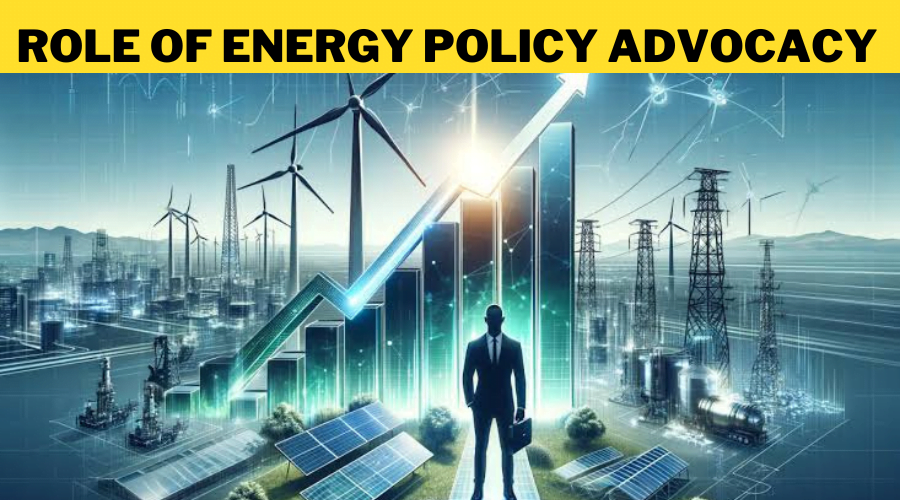

Advocacy, however, entails the active guide and advertising of a selected cause or difficulty. In the context of power, advocacy plays a essential function in influencing policymakers and stakeholders to adopt policies that align with the desires of sustainability and equitable get right of entry to to strength assets.
- Raising Awareness: Advocacy efforts help raise awareness approximately strength-related problems, consisting of weather alternate, power get right of entry to, and environmental sustainability. By highlighting the significance of those problems and their implications for society, advocates can mobilize public guide and pressure policymakers to take action.
- Influencing Decision-Makers: Advocates work to influence policymakers, legislators, and regulators to adopt energy regulations that align with their dreams and values. This may additionally involve lobbying, imparting expert testimony, and engaging in direct communique with decision-makers to train them about the capability affects of different policy options.
- Shaping Policy Debates: Advocacy agencies contribute to shaping the public discourse round strength coverage by means of carrying out studies, producing reports, and publishing analysis that inform coverage debates. By supplying credible evidence and persuasive arguments, advocates can shape the narrative and affect the direction of policy discussions.
- Mobilizing Stakeholders: Advocacy efforts often contain mobilizing diverse stakeholders, such as agencies, environmental companies, network businesses, and worried residents, to support precise strength guidelines. By constructing coalitions and fostering collaboration among stakeholders with shared interests, advocates can make bigger their collective affect and advocacy efforts.
- Promoting Innovation: Advocacy businesses play a function in selling innovation inside the energy quarter through advocating for rules that help research, development, and deployment of easy power technologies. By advocating for investments in innovation and supportive regulatory frameworks, advocates can help boost up the transition to a greater sustainable and resilient energy gadget.
- Holding Decision-Makers Accountable: Advocates maintain decision-makers accountable for their moves and selections associated with electricity policy by tracking their overall performance, monitoring policy implementation, and advocating for transparency and responsibility in selection-making procedures. By conserving choice-makers responsible, advocates can help make sure that strength rules serve the public interest and cope with the wishes of all stakeholders.
- Addressing Equity and Justice: Advocacy efforts in strength coverage regularly attention on addressing fairness and justice issues, consisting of making sure get admission to to less expensive and clean energy for marginalized groups, selling workforce improvement and activity introduction within the easy power area, and advocating for regulations that prioritize the needs of prone populations.
Key Issues in Energy Policy Advocacy
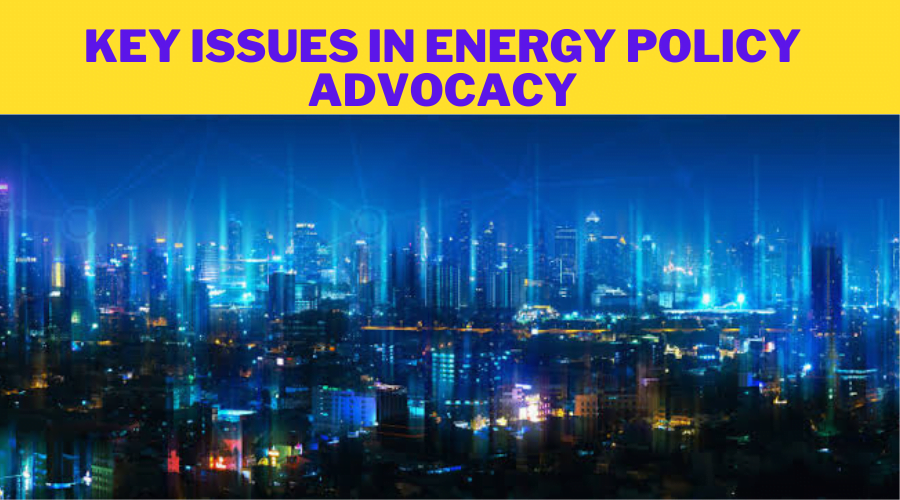

Advocates regularly awareness on key problems along with weather alternate mitigation, selling renewable energy sources, enhancing power efficiency, and regulating the use of fossil fuels. These troubles are important in addressing the challenges of climate alternate, decreasing greenhouse gas emissions, and transitioning to a extra sustainable strength destiny.
Certainly! Here’s the table with descriptions delivered for each key trouble:
| Key Issues in Energy Policy Advocacy | Description |
|---|---|
| 1. Climate Change Mitigation | Advocates push for policies that promote renewable energy sources like solar, wind, and hydroelectric power while reducing reliance on fossil fuels, which are major contributors to greenhouse gas emissions. |
| 2. Energy Security | Advocates work to ensure stable and reliable access to energy sources by diversifying energy sources and developing domestic resources to reduce dependence on foreign imports. |
| 3. Energy Affordability | Advocates promote policies that promote energy efficiency, renewable energy subsidies, and equitable distribution of energy costs to ensure that energy remains affordable, particularly for low-income households. |
| 4. Environmental Protection | Advocates prioritize environmental protection and sustainable practices in energy production to minimize air and water pollution, habitat destruction, and resource depletion. |
| 5. Technological Innovation | Advocates support research and development initiatives for clean energy technologies, energy storage solutions, and smart grid systems to drive innovation in the energy sector. |
| 6. Energy Access | Advocates work to expand access to reliable and affordable energy services through infrastructure development and policy interventions, particularly in rural and underserved communities. |
| 7. Regulatory Frameworks | Advocates push for policies that promote transparency, competition, and market stability while balancing environmental and consumer protection concerns in the regulatory environment. |
| 8. Energy Transition and Just Transition | Advocates support a just transition to a low-carbon energy system, including workforce training programs, economic diversification initiatives, and social safety nets to ensure that affected workers and communities are not left behind. |
| 9. Grid Modernization | Advocates promote investments in grid modernization to enhance reliability, resilience, and efficiency of the electrical grid, enabling better integration of renewable energy sources and adoption of new technologies. |
| 10. International Cooperation | Advocates advocate for diplomatic efforts and multilateral agreements to address global energy challenges such as climate change, energy security, and access to energy resources through international cooperation. |
Challenges in Energy Policy Advocacy
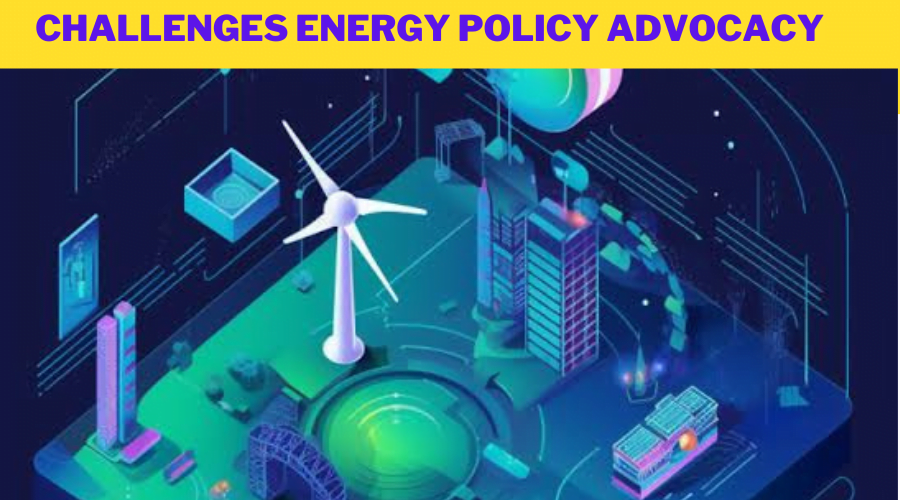

However, energy policy advocacy is not without its challenges. Political barriers, economic interests, and lack of public awareness can hinder progress in advocating for policies that prioritize sustainability and social equity.
| Challenges in Energy Policy Advocacy |
|---|
| 1. Political Interests |
| Energy policy decisions influenced by powerful political interests, including lobbyists representing fossil fuel industries or renewable energy sectors. |
| 2. Economic Concerns |
| Transitioning to sustainable energy may require significant initial investment, raising concerns about short-term economic impacts. Advocates must emphasize long-term benefits such as job creation, reduced healthcare costs, and energy independence. |
| 3. Technological Barriers |
| Adoption of new energy technologies hindered by infrastructure upgrades and lack of widespread access to advanced solutions. Advocates must promote research, development, and incentivize deployment of innovative technologies. |
| 4. Public Perception and Awareness |
| Lack of awareness regarding energy policy importance and implications for environment and society. Advocates must engage in public education campaigns to raise awareness and build support for sustainable energy policies. |
| 5. Interconnected Global Challenges |
| Energy policy intertwined with global challenges like climate change, air pollution, and economic inequality. Advocates must address these interconnected challenges holistically, advocating for policies promoting sustainability, equity, and resilience. |
| 6. Policy Complexity and Gridlock |
| Energy policy complexity and gridlock in political environments characterized by polarization and partisan conflict. Advocates must navigate complexity by building coalitions, fostering bipartisan cooperation, and promoting evidence-based policy solutions. |
| 7. Resistance from Established Industries |
| Established industries may resist transition to renewable energy sources due to concerns about market disruption and profit loss. Advocates must engage with industry stakeholders, promote economic diversification, and provide support for workers transitioning to new industries. |
Strategies for Effective Advocacy
To overcome these demanding situations, advocates employ diverse techniques, which include collaboration with stakeholders, accomplishing policy studies, grassroots mobilization, and leveraging media platforms to raise awareness and construct public help for their purpose.
Success Stories in Energy Policy Advocacy
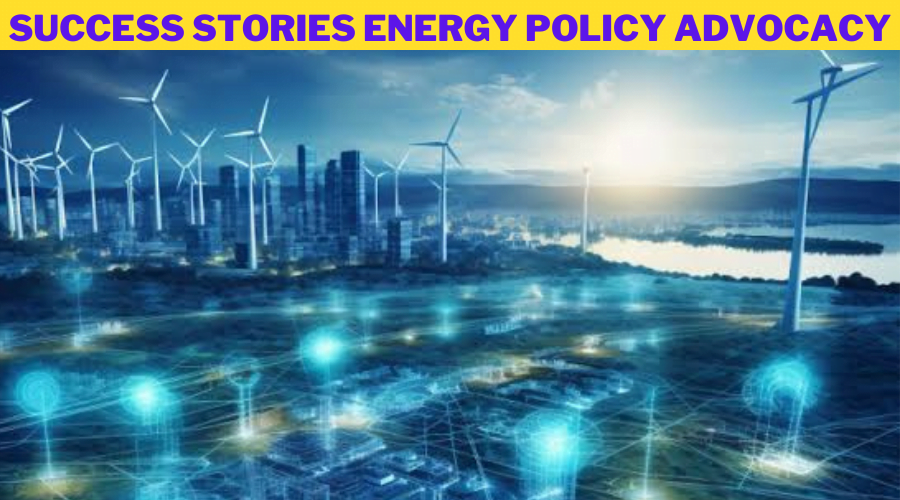

Despite the demanding situations, there have been wonderful successes in power coverage advocacy around the world. From grassroots moves calling for divestment from fossil fuels to worldwide agreements selling renewable strength adoption, advocacy efforts have performed a big position in shaping electricity policies globally.
Renewable Energy Standards (RES) Implementation: Advocacy efforts by using environmental groups, renewable power companies, and worried citizens have brought about the status quo and strengthening of Renewable Energy Standards in many nations and areas. These standards mandate utilities to generate a positive percent of their energy from renewable assets with the aid of a designated date. Success testimonies consist of the implementation of RES in states like California, which has substantially improved renewable electricity deployment and decreased greenhouse fuel emissions.
Carbon Pricing Initiatives: Advocacy campaigns promoting the adoption of carbon pricing mechanisms, consisting of carbon taxes or cap-and-change structures, have won traction in numerous jurisdictions. For example, the implementation of the European Union Emissions Trading System (EU ETS) has contributed to decreasing carbon emissions from industries throughout Europe. Similarly, the introduction of carbon pricing in provinces like British Columbia, Canada, has led to emissions discounts even as fostering innovation in smooth technology.
Phase-out of Fossil Fuel Subsidies: Advocacy efforts by using environmental organizations and financial policy specialists have helped increase cognizance about the unfavourable impacts of fossil fuel subsidies on the environment, public health, and authorities budgets. Success stories include the gradual phase-out of fossil gas subsidies in countries like Indonesia and Egypt, redirecting funds toward investments in renewable strength, power performance, and social welfare packages.
Energy Efficiency Standards and Incentives: Advocacy campaigns selling electricity performance policies, which includes building codes, appliance standards, and financial incentives for electricity-saving measures, have yielded good sized strength savings and emissions discounts. Success memories consist of the adoption of stringent strength performance standards for buildings and home equipment in countries like Japan and South Korea, main to reduced power consumption and lower carbon emissions.
Community Solar Programs: Grassroots advocacy efforts have played a crucial role in selling network solar packages, which enable residents, companies, and agencies to invest in or enroll in shared sun electricity structures. Success testimonies include the enlargement of network solar initiatives in states like Minnesota and New York, growing get right of entry to to renewable strength for families and groups that won’t have the manner to install solar panels on their own residences.
These fulfillment stories highlight the impact of powerful advocacy in shaping power regulations that sell sustainability, mitigate climate trade, and foster a transition toward a cleaner and greater resilient energy future.
Future Trends in Energy Policy Advocacy
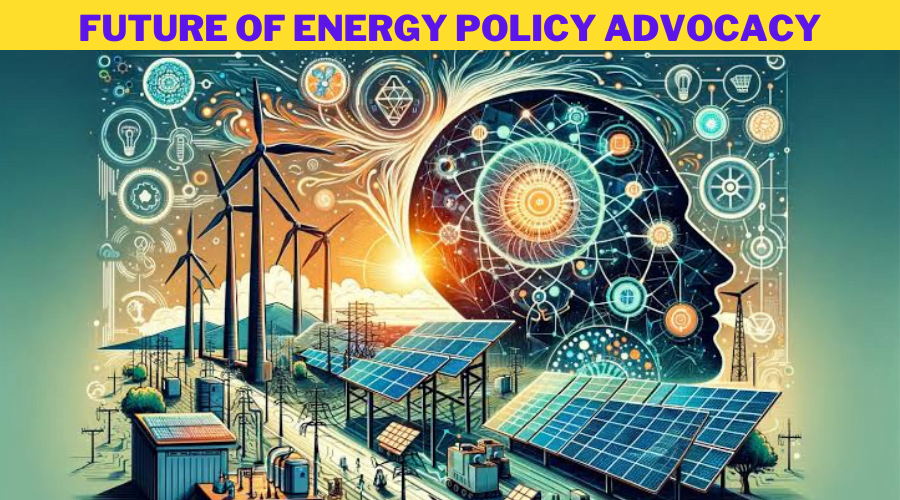

Looking in advance, technological improvements, growing worldwide cooperation, and progressive coverage answers are expected to form the destiny of energy coverage advocacy. As the urgency of addressing climate alternate grows, advocacy efforts will maintain to play a essential function in using coverage alternate and shaping the destiny of power.
Renewable Energy Expansion: As the arena keeps to prioritize lowering carbon emissions, advocacy efforts will increasingly more cognizance on expanding the usage of renewable energy assets which include sun, wind, and hydroelectric power. This will involve lobbying for rules that incentivize renewable strength deployment, which includes tax credits, subsidies, and renewable portfolio standards.
Decentralization and Grid Modernization: Advocates will push for regulations that guide the decentralization of strength generation and the modernization of the electrical grid. This consists of promoting distributed strength assets like rooftop sun panels and power storage structures, as well as clever grid technology that improve performance and reliability.
Electrification of Transportation: With the upward thrust of electric cars (EVs), energy coverage advocacy will increasingly attention on assisting the electrification of transportation. This may additionally contain advocating for incentives to encourage EV adoption, along with subsidies for electric vehicle purchases, as well as investments in charging infrastructure.
Energy Efficiency: Advocates will preserve to emphasize the significance of strength performance as a fee-effective manner to lessen power intake and lower carbon emissions. This may want to contain lobbying for building codes that require electricity-green layout and appliances, as well as programs to incentivize energy-saving practices in industry and transportation.
Environmental Justice and Equity: There will probably be a growing emphasis on environmental justice and equity in strength policy advocacy, specifically in marginalized groups disproportionately suffering from pollutants and weather change. Advocates can also push for regulations that prioritize clean energy investments in these communities and ensure that they have access to the blessings of renewable power technology.
Climate Resilience and Adaptation: As the influences of climate trade emerge as extra mentioned, advocacy efforts will more and more attention on building resilience and adapting to a changing weather. This could involve lobbying for rules that fund climate model measures, such as making an investment in resilient infrastructure and promoting sustainable land use practices.
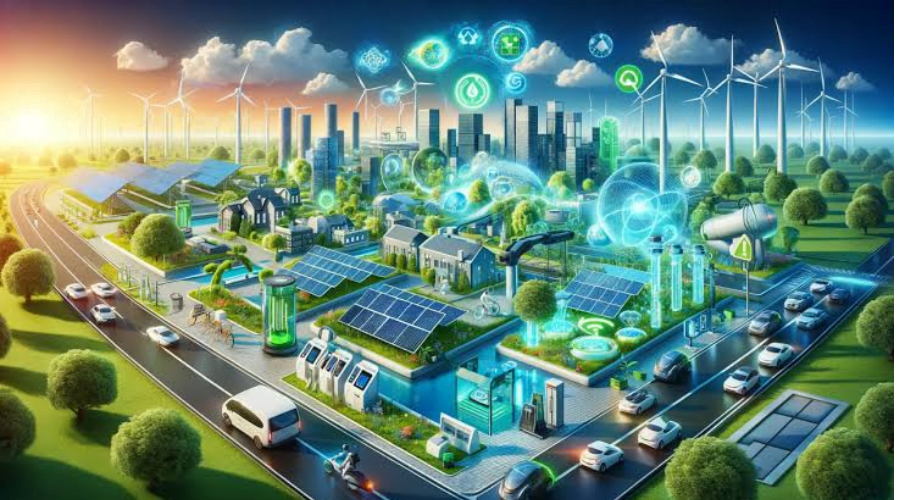

Public Engagement and Education: Advocacy agencies will hold to have interaction with the general public and policymakers to raise cognizance about the importance of energy policy and the urgency of addressing weather trade. This might also involve grassroots organizing, public campaigns, and academic projects to mobilize help for clean energy answers.
Overall, destiny developments in energy coverage advocacy will in all likelihood be characterised via a persisted push for ambitious guidelines to accelerate the transition to a smooth energy destiny and deal with the demanding situations of climate alternate.
Conclusion
Energy policy advocacy is vital for shaping the future of power and ensuring a sustainable and equitable power transition. By advocating for guidelines that prioritize sustainability, equity, and resilience, we will build a higher destiny for generations to come.
FAQs (Frequently Asked Questions)
What is strength coverage advocacy?
Energy coverage advocacy involves advocating for rules that sell sustainable electricity practices, address weather change, and make sure equitable access to electricity resources.
Why is strength policy advocacy vital?
Energy coverage advocacy is critical for shaping the future of strength and addressing urgent issues which includes climate exchange, strength security, and financial development.
What are a few key problems in energy coverage advocacy?
Key problems in power coverage advocacy encompass weather exchange mitigation, promoting renewable electricity adoption, enhancing electricity efficiency, and regulating fossil gas use.
What are the challenges in electricity coverage advocacy?
Challenges in strength policy advocacy include political limitations, economic pursuits, and shortage of public recognition and engagement.
How can people get concerned in electricity coverage advocacy?
Individuals can get concerned in power policy advocacy by joining advocacy organizations, contacting policymakers, collaborating in grassroots moves, and elevating consciousness in their communities.


TotalInfo4U: Your Ultimate Source for Comprehensive Knowledge

